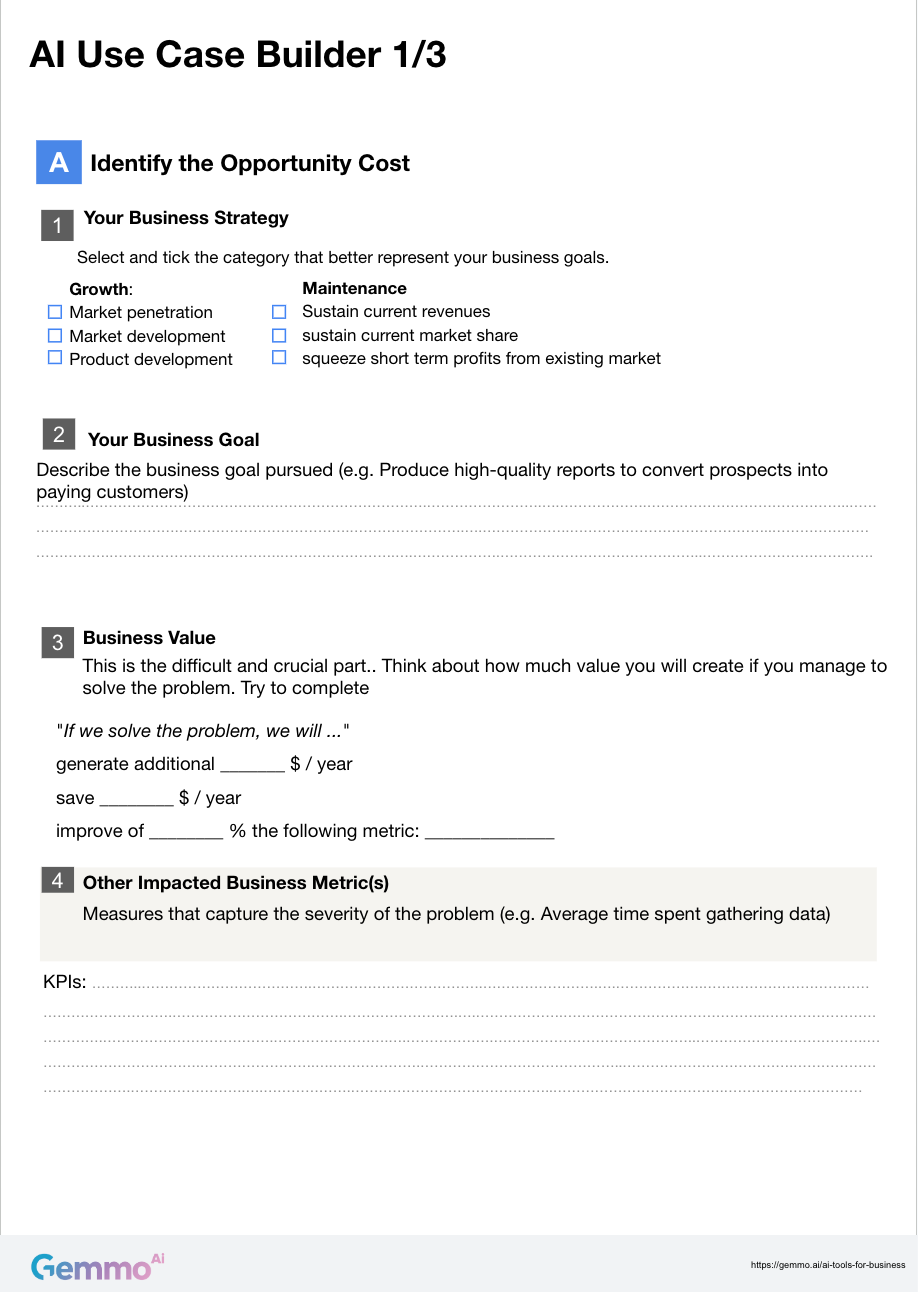
AI Tool: Use Case Builder 1/3
The Artificial Intelligence Tool: Use Case Builder Series is a tool that can help business owners, managers, and AI-adopters. The framework allows for a strategic analysis of how AI can be useful for business. The following template is the first part of a three-part series, in each installment an example will be used to explain the template. For this first part, our example will be an online Boutique that sells bespoke jewelry.

A. Opportunity Cost
1. Your Business Strategy
The Boutique’s growth strategy most corresponds with Growth: Market Penetration. The business is competing in an area that’s already overwhelmingly full. From the big names like Cartier, to Van Cleef & Arpels, to smaller brands not dissimilar to our Boutique. Consequently, there is a need for the Boutique firm to improve upon their existing strategies to better compete.
2. Your Business Goal
The overhead business goal of the Boutique is to increase their growth by improving their market penetration. In service of this overhead goal, are smaller goals that may be addressed by numerous approaches, from better management, to improved strategy, and in our case, an AI approach. Therefore, detailing the smaller goals into concrete bullet points is a good way to have a clear view for assessing the success of the chosen approach.
For the Boutique the smaller goals are as follows:
- Lower cost of bespoke jewelry creation, to allot more budget into marketing pursuits.
- Discover the jewelry templates that are popular with the target customers.
- Improve brand recognition.
- Attain better marketing partnerships: celebrity use, influencer adoption, etc
The outlined smaller goals provide the business a way to assess their progress, providing metrics that the chosen solution can be assessed against.
3. Business Value
The business value pertains to the concrete results following the achievement of the smaller goals detailed above. Moreover, this part of the template allows for the creation of metrics that are measurable. Hence, once these metrics once identified, taken note of and then tracked as the solution is applied to assess progress.
Some examples that work for the Boutique as they follow upon the smaller goals are:
- Success would be: bring down 400$ for bespoke jewelry creation to 300$
- Identify the top 10 most popular jewelry templates not just from our shop, but across the board of the industry
- A market research test of brand recognition that concludes brad recognition has increased from 15%
- Increase partnerships from 15% to 20% & reduce costs of partnerships monetarily by 2%
4. Other Impacted Business Metric(s)
The Boutique also needs to identify other key performance indicators. Even ones that are not directly, or less related to the attainment of the overhead goal identified. Moreover, this approach allows the Boutique to have a comprehensive view of the business as it corresponds to the strategy or solution employed. The oversight is important, in case the solution affects other parts of the business that haven’t be identified prior, or anticipated.
For our purpose, examples could be:
- Less work in-house.
- More cohesion is achieved within the team
- The solution sparked innovative ideas within the team.
Conclusion
The template above, as used by the theoretical Boutique illustrates how a guide is useful for diagnosis of a problem. Furthermore, it allows for the careful breakdown of the issue, with the requisite low-level goals identified and quantified for better assessment. In this example we have not tackled exactly how AI may be used in the case. But rather, how the case should be set-up for the proper assessment of an AI solution. The next installment of the AI tool will delve more into the application of AI to the issue at hand.
